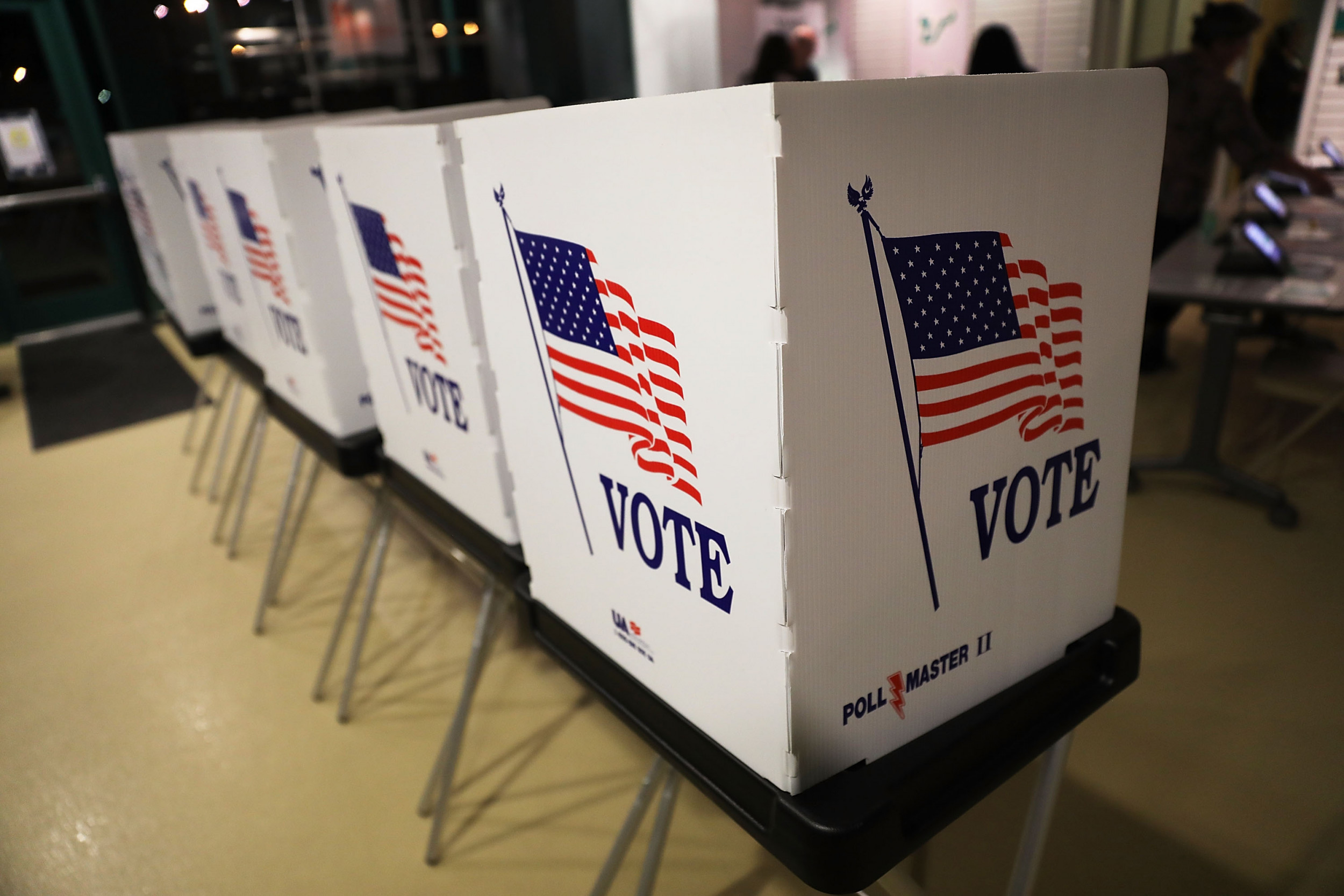
Read about UAA's participation with National Study of Learning, Voting, and Engagement (NSLVE)

Campus Vote Project UAA strives to increase voter registration, education and turnout, with a special focus on college students. The project began during the spring 2016 semester and has continued each semester since. Much of the Campus Vote Project UAA efforts take place in sections of Fundamentals of Oral Communication (COMM A111), with students creating informative materials and encouraging voter registration on campus. Through these efforts, nearly 400 people have been registered to vote (as of Sept. 2017). As a result of our outreach, UAA has been designated a Voter Friendly Campus.

Read about UAA's participation with National Study of Learning, Voting, and Engagement (NSLVE)

UAA is a member of the All in Democracy Challenge

Learn more about voting in Alaska
The political process can be daunting and rough, it is not a stretch to call it unfriendly at times. New voters are often uninspired when it comes to exercising their democratic muscles. Professor of communications, Marsha Olson and her students are easing students into their roles as voters by creating a welcoming, inclusive atmosphere that fosters participation in this fundamental right of citizenship.
Voter turnout has been steadily dropping since 2008. Young voters consistently have the lowest turnout rates. Becoming well informed about the candidates and measures on the ballot can be overwhelming for anybody but especially for those new to voting. New voters may find the process confusing. They may feel their vote is not important or the issues on the ballot do not have relevance in their lives. Professor Olson and her communications students are working to change these unfavorable perceptions of voting by participating in a nationwide initiative to create a voter-friendly campus.
Olson and the 75 students of her Comm A111 classes have partnered with the League of Women Voters and The Student Life and Learning club on campus to provide voter information and registration services for students and the community.
The students participate by staffing nonpartisan tables set up in the Student Union or by presenting a brief informative speech to classrooms on campus. From these efforts, they are able to help with registration, dispel myths that a vote doesn’t matter and encourage young voters to see beyond the glamour and intimidation of presidential voting and garner interest in local voting. The students are given training and a fact sheet to help inform visitors on the nuts and bolts of voting, polling location information and registration help. The League of Women Voters has tables set up nearby to help inform students about particular measures and candidates on the ballot.
Professor Olson stresses the need for this type of intervention, “Students are confused and overwhelmed by the process of voting. Young voters see hostility in party battles and are often turned off to committing to one party.” Since they do not hold allegiance to a party, students are on their own when it comes to information about candidates. They also miss out on being a part of a community of voters.
The answer is not to encourage party allegiance necessarily, but simply to make information more accessible to students. By improving information access and by creating positive community events on campus, Olson hopes to turn student’s perception of voting as a useless activity that angry older people do, into one of empowerment and participation that is for them too.

Marsha Olson is a Term Instructor for Journalism & Communication in the College of Arts and Sciences. She teaches several oral communication GER courses at UAA. Most of her classes include first- and second-year students from a wide variety of degree fields.
As an educator, particularly in the communication field, helping students to find and use their voice is crucial to her work. While hypothetical discussions regarding topics is useful, it is the practical application in "real world" situations that aids understanding and retention most significantly. The opportunities that community-engaged work presents are beneficial in creating experiences for her students to practically apply the communication concepts they cover in class. Not only does community engaged work allow for "real world" application, it also supports student connection to their community.
Contact: maschirack@alaska.edu